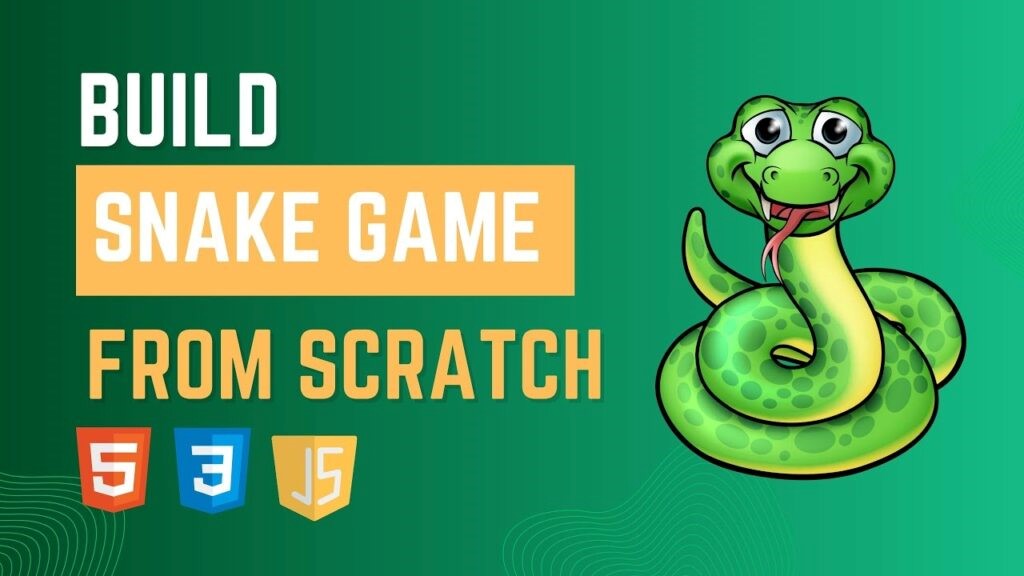If you’ve ever wondered How to Build a Snake Game, the good news is that this classic project is one of the most enjoyable ways to understand how logic, movement, and user interaction come together in a simple yet addictive experience. Even if you’re just starting out as a developer, this project gives you a clear path to learning essential principles without overwhelming complexity. By focusing on small, manageable steps, you’ll not only learn game mechanics but also build confidence in tackling bigger programming ideas later.
Why the Snake Game Is the Perfect Starter Project
Before diving into the code, it’s important to understand why the Snake game remains one of the most recommended starting projects. It teaches movement control, collision detection, score tracking, and boundary logic—skills that appear in nearly every other game genre. Because the design is simple, your creativity shines. You can modify speed, create maps, experiment with colors, and learn how simple rules can create endless engagement.
Visualizing the Game Layout
Before writing your first block of code, imagine the environment. The Snake game is built on a grid-like board divided into tiny cells. The snake occupies a chain of these cells, moving one space at a time. Food spawns randomly, and whenever the snake reaches it, the length of the body increases. This layout helps you understand how the game “reads” positions and updates visuals using simple calculations. Even a basic drawing on paper helps you visualize the entire concept.
Planning Game Mechanics and Rules
Game planning is often the most overlooked step, yet it’s crucial. The foundation of the Snake game revolves around four primary mechanics: direction control, food consumption, movement updates, and collision results. Direction control ensures the player decides where the snake moves next. Food consumption triggers growth. Movement updates make the snake shift with every tick. Collision logic decides whether the game continues or ends. Outlining these mechanics gives you a roadmap before you jump into coding.
Handling Snake Movement Smoothly
Movement is the heartbeat of your Snake game. Every time the game updates, the snake advances by one grid cell. This means storing each segment’s coordinates and shifting them forward. Many beginners use arrays or lists for this purpose. When the head moves, the rest of the body follows. Smooth movement comes from updating the array from the tail toward the head. This ensures your snake feels responsive and realistic when the player changes direction.
Generating and Positioning Food
One of the most satisfying parts of the game is watching the snake reach the food and grow. To make this happen, the food must appear at a random, valid position on the grid. You’ll learn how to generate random coordinates and ensure they don’t overlap with the snake’s body. This creates fairness and prevents frustration. Once placed, the food remains until the snake reaches it, triggering a growth and score increase.
Detecting Collisions and Ending the Game
Collisions are the reason the Snake game is exciting. If the snake crashes into a wall or itself, the game ends instantly. Detecting these collisions requires checking the snake’s head position against boundaries and its own body. Implementing this logic early keeps your structure clean and avoids bugs later. Ending the game can be as simple as stopping the update loop and showing a message—but you can also add animations, sounds, or restart options.
Designing the Score System
No game is complete without feedback, and scoring is a must-have. Every time the snake eats food, you increase the score. This is usually handled by a variable that updates and displays on the screen. You can even implement milestones or speed boosts based on score progress. This motivates players and keeps gameplay exciting. Additionally, learning how to update text on-screen is a useful skill for building other games too.
Improving the Visual Presentation
Even though Snake is simple, you can make it visually appealing. You can add grid lines, glowing effects, shadows, or smooth color transitions. Many developers experiment with different snake shapes or animation styles. This teaches you the importance of user experience. A cleaner, brighter design can make the game feel modern while preserving its nostalgic vibe.
Adding Sound Effects and Feedback
Sound effects elevate immersion. A small “pop” when the snake eats food or a sharp “buzz” when the player loses adds emotional depth to the game. These sounds can be created or downloaded for free, then triggered by simple conditions within your code. This step teaches you how audio integration works—a valuable ability for future gaming projects.
Increasing Difficulty and Speed
To keep the game challenging, you can gradually increase speed. Many versions of Snake speed up every time the snake grows or reaches a certain score. By adjusting the interval of your update loop, you can make the game feel more intense. Difficulty adjustment is also an important lesson in game balance, showing how small tweaks create major changes in player experience.
Adding Menus and Navigation
A polished game has more than a play screen. You can add a start menu, pause option, settings, and a game-over screen. These additions teach you interface development and event handling. Players appreciate having the ability to start fresh or take a break. Adding menus also helps your project feel like a complete product rather than a simple demo.
Saving High Scores and Progress
If you want your game to feel competitive, adding a high-score feature is great. You can store scores locally using simple text files, JSON storage, or browser storage in web-based games. This encourages players to beat their previous records. Learning to save and load data also sets the foundation for more advanced game programming later on.
Optimizing Your Code Structure
As your game grows, keeping the code clean becomes more important. Breaking your program into functions or classes helps organize movement, collisions, rendering, and scoring. You’ll understand how modularity improves readability and performance. Good code structure makes it easier to add upgrades later without rewriting everything from scratch.
Testing and Debugging the Game
Once your prototype works, you must test it thoroughly. Does the snake react instantly when the player turns? Does food ever spawn inside the snake? Does the game properly detect collisions? Debugging teaches you patience and problem-solving. Every issue you fix improves the final experience and boosts your programming confidence.
Adding Creative Extensions
After completing your basic version, you can start exploring exciting customizations. Many developers add obstacles, multiple food types, power-ups, or even enemy snakes. You might create a shrinking snake mode, teleporting walls, or time challenges. These enhancements not only improve gameplay but also showcase your creativity. They’re great additions to your portfolio as well.
Porting the Game to Multiple Platforms
Once the game runs on one platform, it’s surprisingly easy to adapt it to others. You can move it to a mobile interface using touch controls, create a web version for browsers, or even rewrite it in another programming language to strengthen your knowledge. Porting teaches you the flexibility of design and code, helping you become a more versatile developer.
Sharing Your Game with Others
One of the best parts of completing a project is sharing it. You can upload your game to coding communities, game-hosting platforms, or social media. Feedback from real players helps you refine your project further. Sharing also builds your confidence as a developer and motivates you to take on more ambitious ideas.
Reflecting on What You Learned
Building a Snake game from scratch teaches you far more than you might expect. You learn how to manage movement, create interactive environments, balance difficulty, optimize logic, and polish user experience. The project gives you hands-on knowledge that carries over into every other game or app you create. By completing it, you not only master a nostalgic classic—you build the foundation of your programming journey.
Final Thoughts
The Snake game may be simple, but the lessons behind it are powerful. This project helps you think like a developer, experiment freely, and understand how multiple systems interact in real time. Whether you’re pursuing game development or just exploring programming, completing this project is a milestone worth celebrating. With creativity, patience, and a bit of curiosity, your Snake game won’t just be a coding exercise—it will become your first personal achievement in interactive development.

